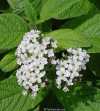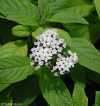 |
 |
 |
 |
 |
 |
 |
flowers
Their Spiritual significance
Photo Collection
Vital consecration
Delightfully modest and fragrant, it smiles at life without wanting to draw attention to itself.
Heliotropium arborescens L. (Boraginaceae)
Garden heliotrope
Pale to deep purple
If you want a true mastery and transformation of the vital movements, it can be done only on condition you allow your psychic being, the soul in you, to awake fully, to establish its rule and opening all to the permanent touch of the Divine Shakti, impose its own way of pure devotion, whole-hearted aspiration and complete uncompromising urge to all that is divine on the mind and heart and vital nature. There is no other way and it is no use hankering after a more comfortable path.
Sri Aurobindo
Sri Aurobindo. Sri Aurobindo Birth Centenary Library in 30 Volumes. - Volume 24. - Letters on Yoga.-P.4
Men usually work and carry on their affairs from the ordinary motives of the vital being, need, desire of wealth or success or position or power or fame or the push to activity and the pleasure of manifesting their capacities, and they succeed or fail according to their capability, power of work and the good or bad fortune which is the result of their nature and their Karma. When one takes up the yoga and wishes to consecrate one ' s life to the Divine, these ordinary motives of the vital being have no longer their full and free play; they have to be replaced by another, a mainly psychic and spiritual motive, which will enable the sadhak to work with the same force as before, no longer for himself, but for the Divine. If the ordinary vital motives or vital force can no longer act freely and yet are not replaced by something else, then the push or force put into the work may decline or the power to command success may no longer be there. For the sincere sadhak the difficulty can only be temporary; but he has to see the defect in his consciousness or his attitude and to remove it. Then the Divine Power itself will act through him and use his capacity and vital force for its ends. In your case, it is the psychic being and a part of the mind that have drawn you to the yoga and were predisposed to it, but the vital nature or at least a large part of it has not yet put itself into line with the psychic movement. There is not as yet the full and undivided consecration of the active vital nature.
The signs of the consecration of the vital in action are these among others:
The feeling (not merely the idea or the aspiration) that all the life and the work are the Mother's and a strong joy of the vital nature in this consecration and surrender. A consequent calm content and disappearance of egoistic attachment to the work and its personal results, but at the same time a great joy in the work and in the use of the capacities for the divine purpose.
The feeling that the Divine Force is working behind one's actions and leading at every moment.
A persistent faith which no circumstance or event can break. If difficulties occur, they raise not mental doubts or an inert acquiescence, but the firm belief that, with sincere consecration, the Divine Shakti will remove the difficulties, and with this belief a greater turning to her and dependence on her for that purpose. When there is full faith and consecration, there comes also a receptivity to the Force which makes one do the right thing and take the right means and then circumstances adapt themselves and the result is visible.
To arrive at this condition the important thing is a persistent aspiration, call and self-offering and a will to reject all in oneself or around that stands in the way. Difficulties there will always be at the beginning and for as long a time as is necessary for the change; but they are bound to disappear if they are met by a settled faith, will and patience.
Sri Aurobindo
Sri Aurobindo. Sri Aurobindo Birth Centenary Library in 30 Volumes. - Volume 23. - Letters on Yoga.-P.2-3
("Vital consecration":) Consecration means offering and making sacred to the Mother so that the whole vital nature may belong to her and not to the lower nature.
Sri Aurobindo
Sri Aurobindo. Sri Aurobindo Birth Centenary Library in 30 Volumes. - Volume 24. - Letters on Yoga.-P.4
It (vital consecration) is to offer all the vital nature and its movements to the Divine so that it may be purified and only the true movements in consonance with the Divine Will may be there and all egoistic desires and impulses disappear.
Sri Aurobindo
Sri Aurobindo. Sri Aurobindo Birth Centenary Library in 30 Volumes. - Volume 24. - Letters on Yoga.-P.4
Vital relations are always dangerous.
A complete, absolute consecration of the vital to the Divine is the only solution.
The Mother
The Mother. Collected Works of the Mother.- Volume 14. - Words of the Mother
The vital has to be carefully distinguished from mind, even though it has a mind element transfused into it; the vital is the Life-nature made up of desires, sensations, feelings, passions, energies of action, will of desire, reactions of the desire-soul in man and of all that play of possessive and other related instincts, anger, fear, greed, lust, etc. , that belong to this field of the nature.
Sri Aurobindo
Sri Aurobindo. Sri Aurobindo Birth Centenary Library in 30 Volumes. - Volume 22. - Letters on Yoga.-P.1
The vital proper is the life-force acting in its own nature, impulses, emotions, feelings, desires, ambitions, etc. , having as their highest centre what we may call the outer heart of emotion, while there is an inner heart where are the higher or psychic feelings and sensibilities, the emotions or intuitive yearnings and impulses of the soul. The vital part of us is, of course, necessary to our completeness, but it is a true instrument only when its feelings and tendencies have been purified by the psychic touch and taken up and governed by the spiritual light and power.
Sri Aurobindo
Sri Aurobindo. Sri Aurobindo Birth Centenary Library in 30 Volumes. - Volume 22. - Letters on Yoga.-P.1
There are four parts of the vital being - first, the mental vital which gives a mental expression by thought, speech or otherwise to the emotions, desires, passions, sensations and other movements of the vital being; the emotional vital which is the seat of various feelings, such as love, joy, sorrow, hatred, and the rest; the central vital which is the seat of the stronger vital longings and reactions, e. g. ambition, pride, fear, love of fame, attractions and repulsions, desires and passions of various kinds and the field of many vital energies; last, the lower vital which is occupied with small desires and feelings, such as make the greater part of daily life, e. g. food desire, sexual desire, small likings, dislikings, vanity, quarrels, love of praise, anger at blame, little wishes of all kinds - and a numberless host of other things. Their respective seats are: (1) the region from the throat to the heart, (2) the heart (it is a double centre, belonging in front to the emotional and vital and behind to the psychic), (3) from the heart to the navel, (4) below the navel.
Sri Aurobindo
Sri Aurobindo. Sri Aurobindo Birth Centenary Library in 30 Volumes. - Volume 22. - Letters on Yoga.-P.1
When there is this death of desire and this calm equal wideness in the consciousness everywhere, that the true vital being within us comes out from the veil and reveals its own calm, intense and potent presence. For such is the true nature of the vital being, prānamaya purusa; it is a projection of the Divine Purusha into life, - tranquil, strong, luminous, many-energied, obedient to the Divine Will, egoless, yet or rather therefore capable of all action, achievement, highest or largest enterprise. The true Life-Force too reveals itself as no longer this troubled harassed divided striving surface energy, but a great and radiant Divine Power, full of peace and strength and bliss, a wide-wayed Angel of Life with its wings of Might enfolding the universe.
Sri Aurobindo
Sri Aurobindo. Sri Aurobindo Birth Centenary Library in 30 Volumes. - Volumes 20-21. - The Synthesis of Yoga
There is behind all the vital nature in man his true vital being concealed and immobile which is quite different from the surface vital nature. The surface vital is narrow, ignorant, limited, full of obscure desires, passions, cravings, revolts, pleasures and pains, transient joys and griefs, exultations and depressions. The true vital being, on the contrary, is wide, vast, calm, strong, without limitations, firm and immovable, capable of all power, all knowledge, all Ananda. It is moreover without ego, for it knows itself to be a projection and instrument of the Divine: it is the divine Warrior, pure and perfect; in it is an instrumental Force for all divine realisations.
Sri Aurobindo
Sri Aurobindo. Sri Aurobindo Birth Centenary Library in 30 Volumes. - Volume 22. - Letters on Yoga.-P.1
This love that is knowledge, this love that can be the deep heart of your action, will be your most effective force for an utter consecration and complete perfection. An integral union of the individual's being with the Divine Being is the condition of a perfect spiritual life. Turn then altogether towards the Divine; make one with him by knowledge, love and works all your nature. Turn utterly towards him and give up ungrudgingly into his hands your mind and your heart and your will, all your consciousness and even your very senses and body. Let your consciousness be sovereignly moulded by him into a flawless mould of his divine consciousness. Let your heart become a lucid or flaming heart of the Divine. Let your will be an impeccable action of his will. Let your very sense and body be the rapturous sensation and body of the Divine. Adore and sacrifice to him with all you are; remember him in every thought and feeling, every impulsion and act. Persevere until all these things are wholly his and he has taken up even in most common and outward things as in the inmost sacred chamber of your spirit his constant transmuting presence.
Sri Aurobindo
Sri Aurobindo. Sri Aurobindo Birth Centenary Library in 30 Volumes. - Volume 13. - Essays on the Gita
Consecration to the Divine is the secret of existence.
The Mother
The Mother. Collected Works of the Mother.- Volume 16. - More answers from the Mother